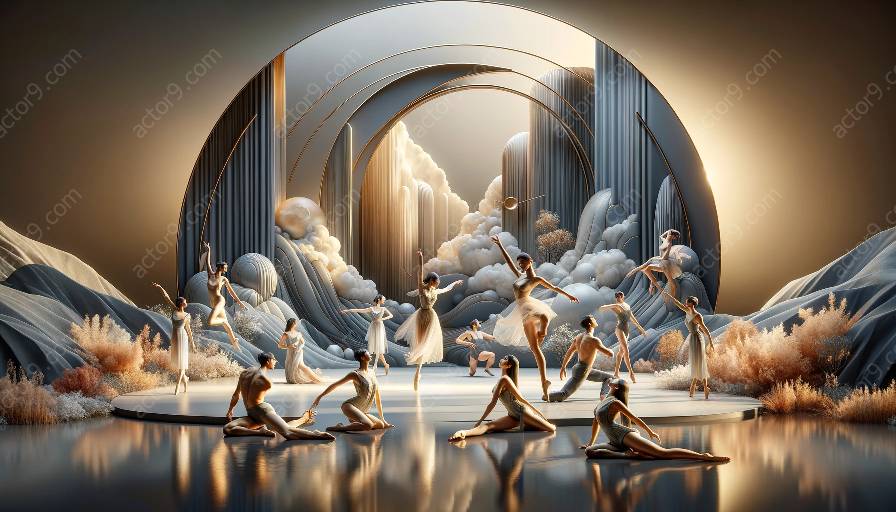When it comes to physical theatre, collaboration plays a crucial role in the creation and execution of compelling productions. This form of performance art relies heavily on the integration of different creative elements, and effective collaboration is essential to bringing these elements together seamlessly. In this article, we will explore the dynamic relationship between collaboration and physical theatre, as well as how it impacts the elements of drama within these productions.
Understanding Physical Theatre and Collaboration
Physical theatre is a dynamic and visceral form of performance that emphasizes physical expression and storytelling through movement, gesture, and the body. Unlike traditional theatre, physical theatre often features minimal or no dialogue, relying on non-verbal communication and expressive movement to convey narratives, emotions, and themes. Collaboration in physical theatre involves a collective effort from various artistic disciplines, including actors, choreographers, directors, set designers, costume designers, and sound designers, among others.
At its core, physical theatre thrives on collaborative creation, and each element of the production process contributes to the overall artistic vision. The seamless integration of movement, music, visual elements, and narrative is made possible through effective collaboration, where each contributor brings their expertise to the table to enhance the collective performance.
The Impact of Collaboration on the Elements of Drama
Physical theatre productions are enriched by collaboration, as it elevates the various elements of drama at play. From the use of space and movement to the development of characters and narratives, collaborative efforts enhance the depth and impact of the performance.
1. Movement and Choreography
Collaboration between actors and choreographers in physical theatre leads to the creation of compelling and emotive movement sequences. Through the shared exploration of physical expression, performers and choreographers can develop unique movements that convey the essence of the narrative and the emotions of the characters. This collaborative process adds layers of meaning to the physical language of the production, enhancing the audience's experience.
2. Set and Visual Design
Collaboration between set designers, visual artists, and directors contributes to the creation of immersive and evocative visual landscapes in physical theatre. The seamless integration of set pieces, props, lighting, and multimedia elements enhances the storytelling and deepens the audience's engagement with the performance. Through collaborative efforts, the visual elements become integral parts of the narrative, enhancing the overall dramatic impact.
3. Sound and Music
Collaboration between sound designers, composers, and performers enriches the sonic dimension of physical theatre productions. Soundscapes, music, and sonic effects are meticulously crafted in tandem with the movement and narrative, creating a multi-sensory experience for the audience. The collaborative fusion of sound and movement heightens the emotional resonance of the performance, immersing the audience in the dramatic world being portrayed.
The Creative Process and Ensemble Dynamics
Collaboration in physical theatre also extends to the development of the creative process and the dynamics within the ensemble. The collective exploration of themes, narratives, and characters fosters a sense of shared ownership and creative investment among the collaborators. This collaborative approach empowers the ensemble to experiment, innovate, and push artistic boundaries, resulting in productions that are rich in depth and innovation.
The ensemble dynamics in physical theatre are shaped by collaboration, as performers and creators work in synergy to bring the performance to life. The collective exploration of physicality, emotions, and storytelling gives rise to a cohesive and integrated artistic vision that reflects the inputs of all collaborators involved. This inclusive approach to creativity strengthens the bond within the ensemble and results in performances that resonate authentically with audiences.
Collaboration and Audience Engagement
Ultimately, the role of collaboration in physical theatre productions extends to the audience experience. The seamless integration of diverse elements, informed by collaborative efforts, creates performances that captivate and resonate with audiences on a profound level. The collaborative synergy behind physical theatre productions enhances the immersive and emotive qualities of the performances, leaving a lasting impression on the viewers.
By understanding the pivotal role of collaboration in physical theatre, we gain insight into the interconnected nature of creative disciplines and the transformative power of collective artistic vision. The collaborative process not only shapes the production itself but also enriches the audience's encounter with the performance, making physical theatre an art form that thrives on the shared ingenuity of its contributors.




































